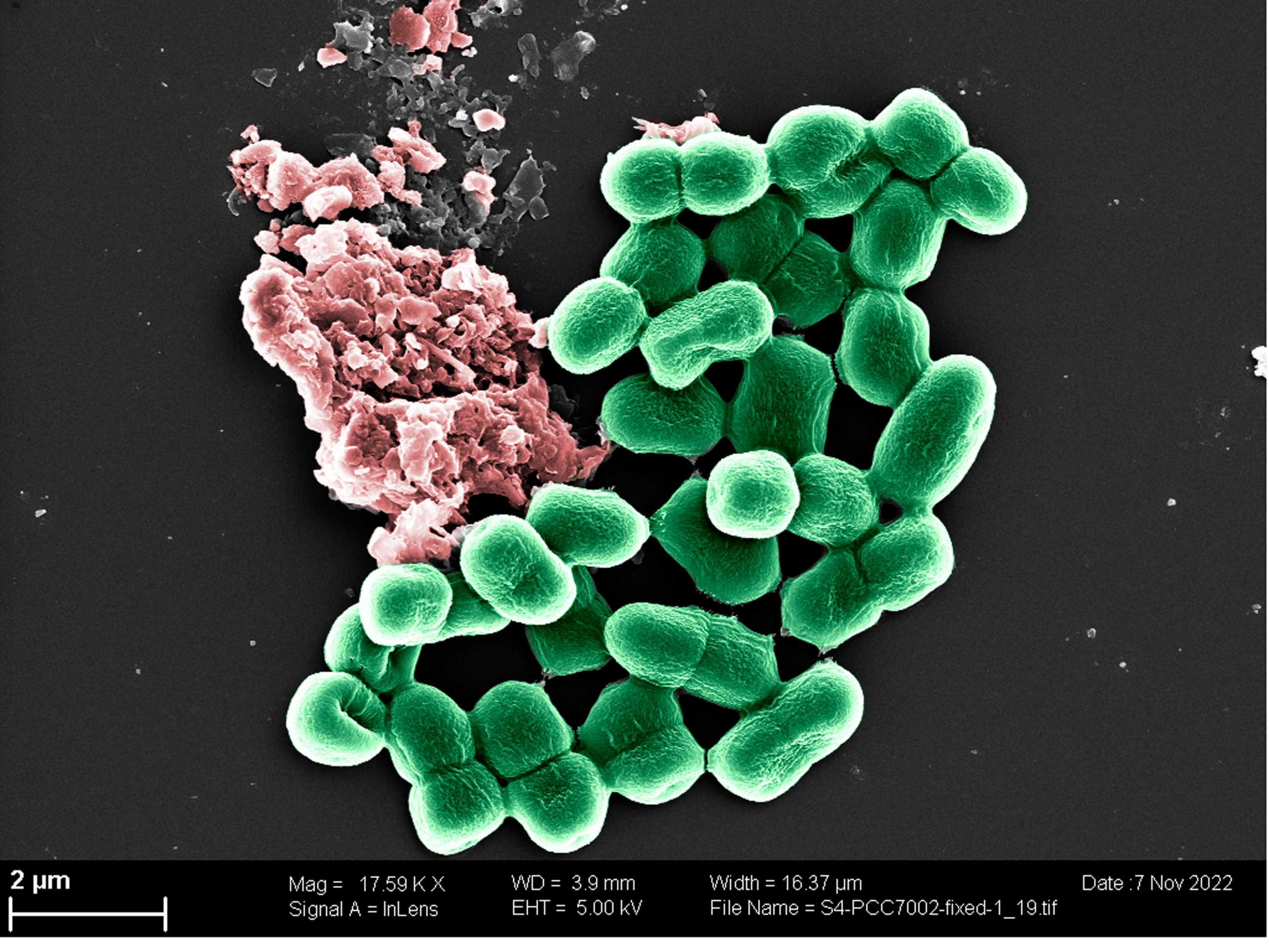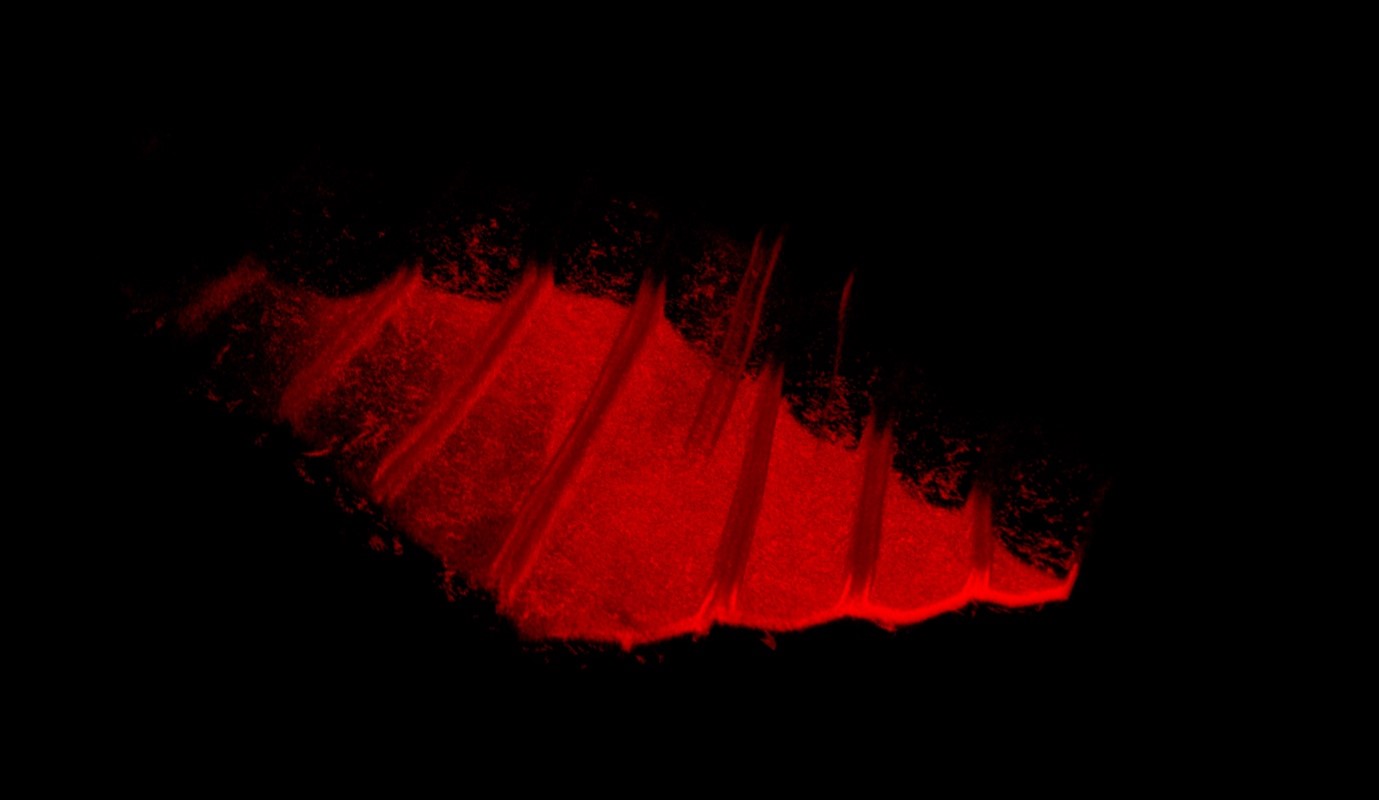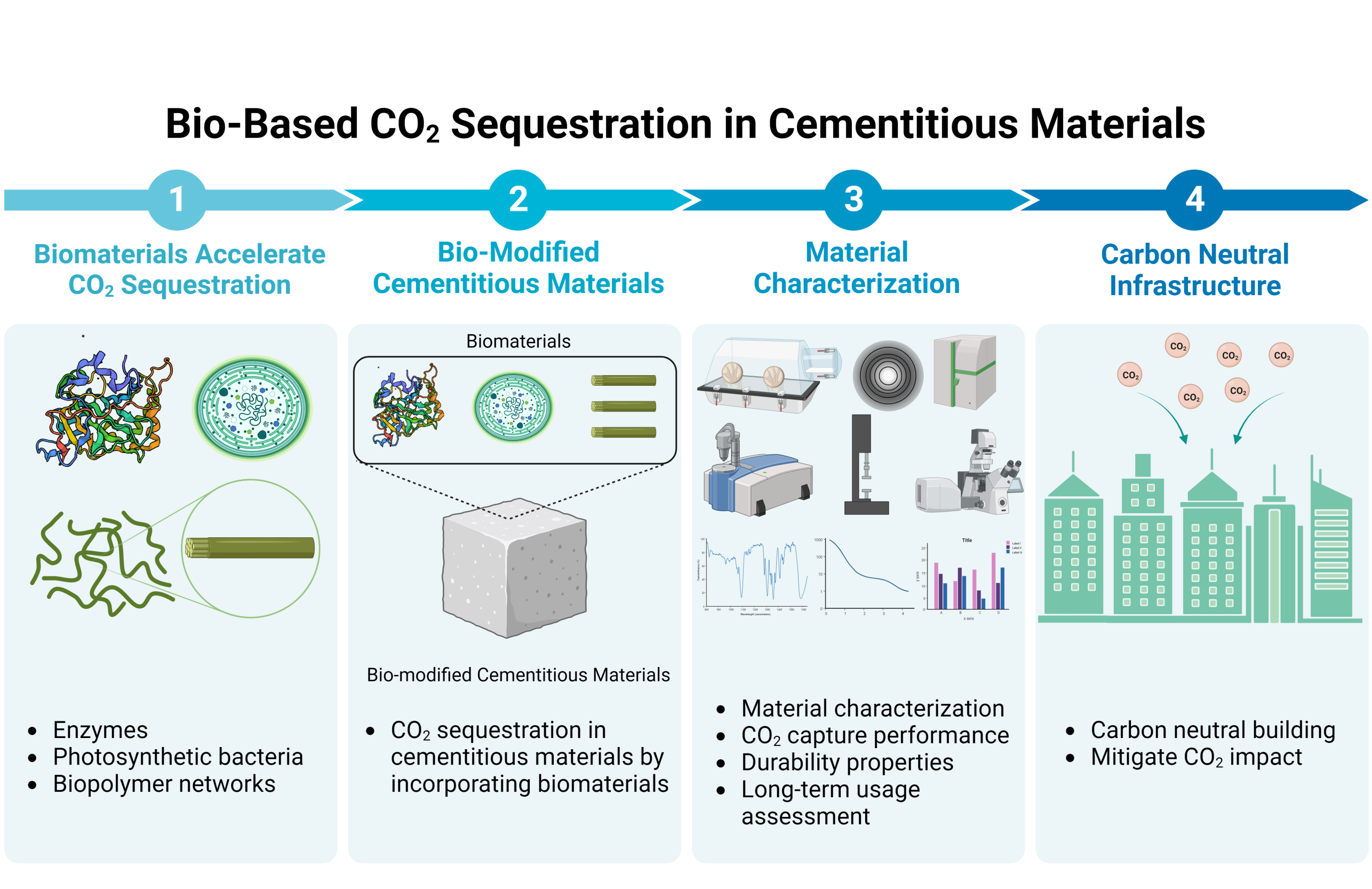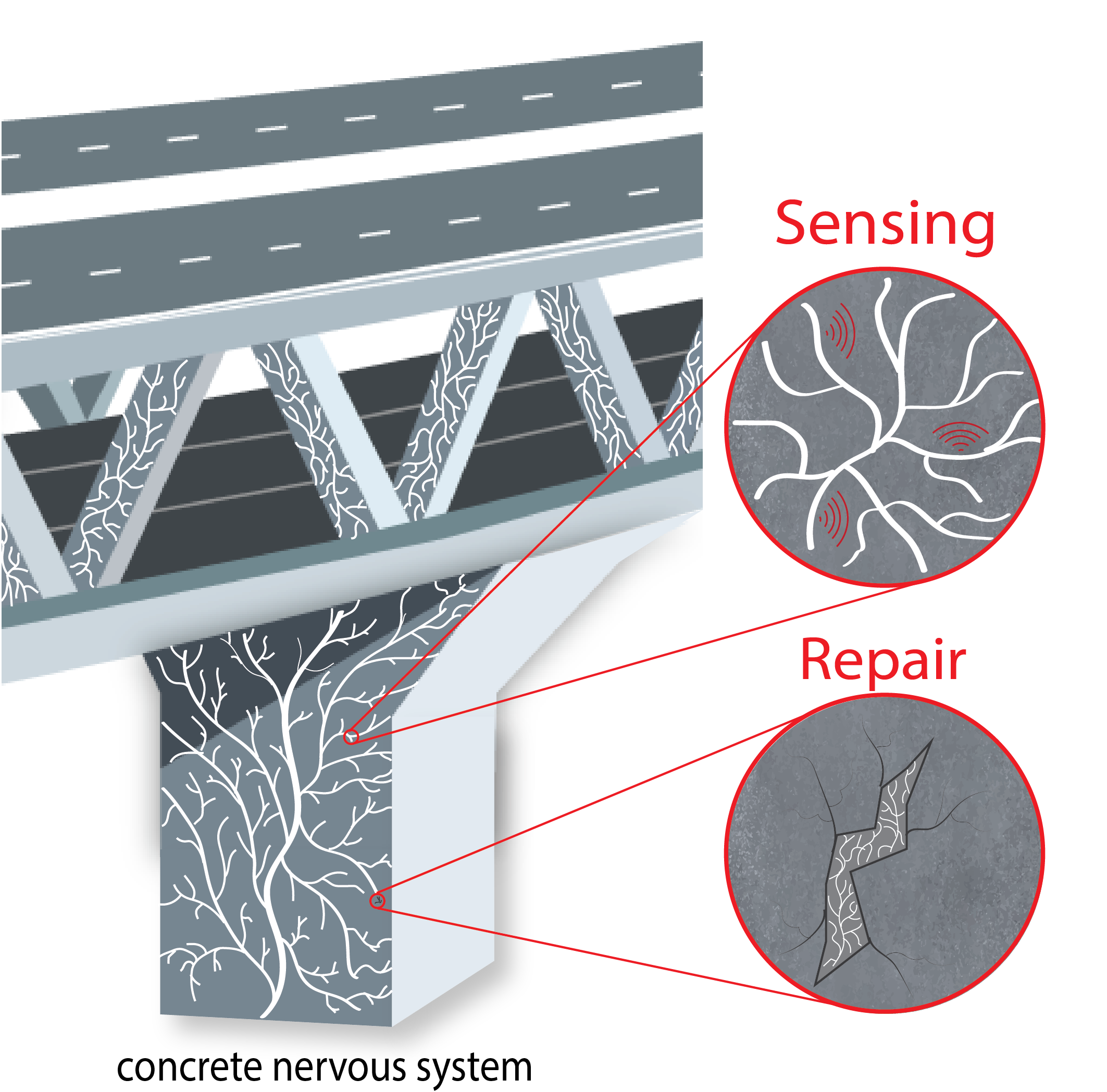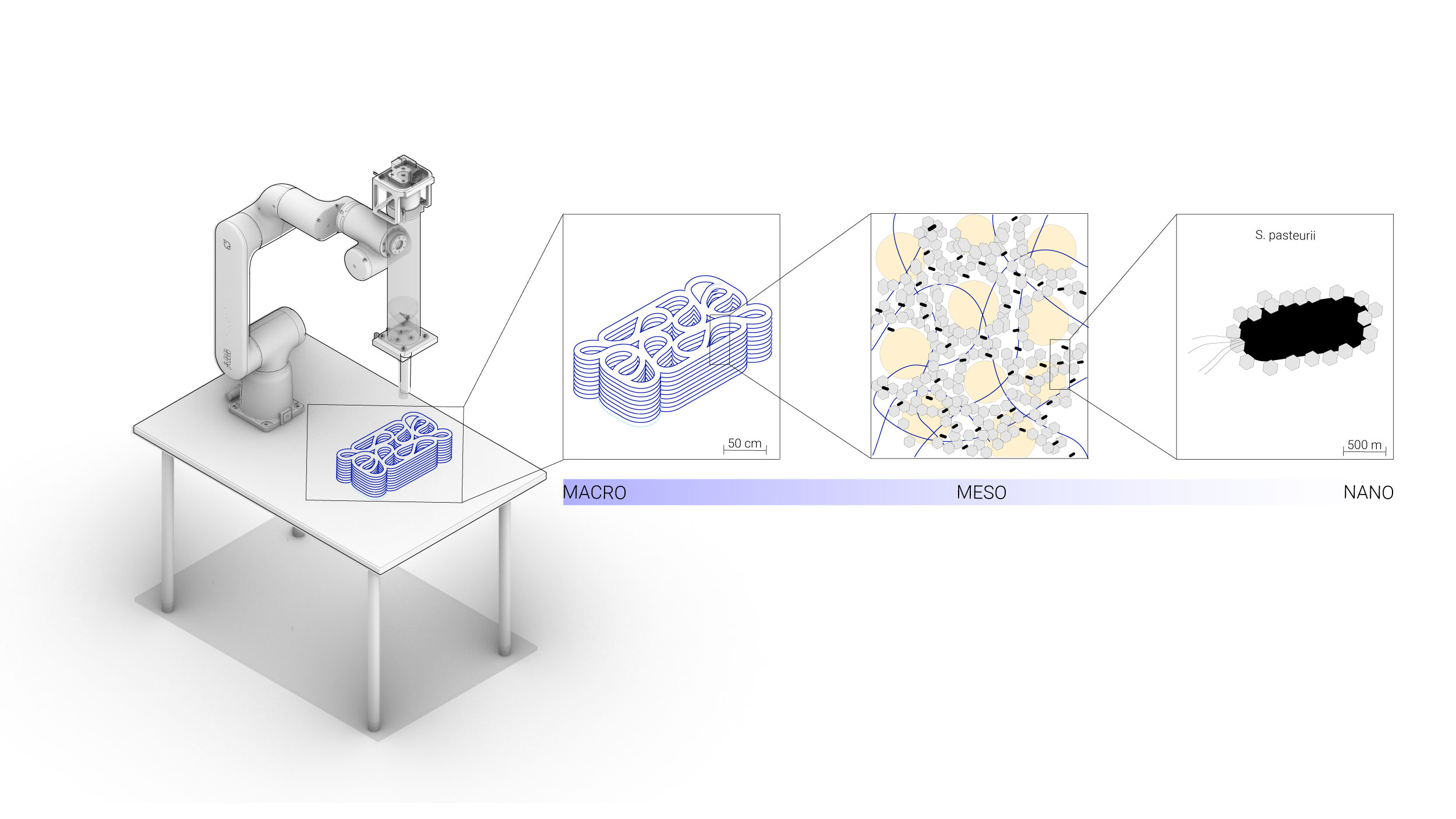Living Systems for Carbon Capturing in Self-Aware Infrastructure (CLiMa)
Motivation & relevance
The steep rise of anthropogenic carbon emissions since the industrial revolution has raised increasing pressure on the environment, which calls for the urgent development of CO2-negative technologies. The infrastructure sector alone accounts for 38% of the global carbon emissions and therefore provides opportunities to address the carbon emission challenge at relevant large scales. To leverage this opportunity and achieve net-zero carbon emissions in the short and long terms, carbon capture should occur in existing and new infrastructure.
Carbon capture in the natural environment is driven by photosynthetic systems, ranging from higher plants to algae and photosynthetic bacteria. Algae alone account for nearly half of the global CO2 uptake. The ability to sequester CO2 at large scales makes these living organisms attractive for future carbon-negative technologies. Bacteria are particularly interesting due to their robustness, widespread and diversity. The successful incorporation of bacteria into concrete has led to building materials with unique self-healing properties and has demonstrated the potential of living organisms in the infrastructure industry.
Key objectives
In this project, we aim at harnessing the metabolism of bacteria, mycelia and other living systems to render infrastructure carbon negative and more durable. Our key objective is to reduce the environmental footprint of construction dramatically with biohybrid systems that build on sustainability, intelligence and resilience.
Carbon-negative systems will require turning existing structures into CO2 sinks and developing structural materials with lower carbon footprint. High durability will be achieved by 3D printing self-aware structures with intrinsic self-healing/sensing abilities driven by embedded microorganisms (e.g. Physarum polycephalum, mycelium). Wood and concrete with designed porosity will be used as scaffolds for the proliferation of living microorganisms and thus creating the envisioned CO2-capturing, self-sensing and -healing functionalities. We can achieve the most significant impact by addressing the entire life cycle of infrastructure:
Existing infrastructures: Combine inanimate existing concrete with living organisms as CO2 carriers into the pore system and for self-healing and sensing. Building-waste: Design organisms that can decompose building materials at the end of service life of a structure and store CO2 in it.
New structures: (i) Use the wood scaffold and impregnate microorganisms that capture CO2 (double carbon sink), improving the building material wood by increasing flame retardancy. (ii) Fabricate performative elements by integrating living systems (e.g. photosynthetic), which can be used to retrofit existing buildings or used in new structures. (iii) Use growth processes to improve the performance of additive manufacturing (AM, e.g. layer adhesion and energy consumption).
Rationale & methods to be employed
Our approach firstly entails the discovery of suitable living constituents. High-throughput screening of functional microbial and fungal consortia is to be used for the discovery of stable organisms, able to efficiently sequester carbon (e.g. via photosynthetic functions), and/or contribute to self-healing mechanisms. For existing structures: the investigation of surface/facade elements and impregnation solutions that embody carbon capturing and awareness abilities will be explored. For new structures, digital fabrication will be exploited for morphing structural materials as an admixture of conventional building materials and the explored living constituents, which can be developed as scaffolds. Key in this investigation is the understanding of geometry at different scales and the implication this bears to the properties of the living materials, which will also dictate the digital fabrication process. The design process will rely on simulation of microbially mediated CO2 transport and capturing in concrete and of its effect on the mechanical properties and durability/corrosion of the developed materials. The in situ performance of the developed solutions upon CO2 uptake will be tracked via the use of embedded sensors and NDT as well as non-contact techniques (like in situ electron microscopy).
Impact, expected output & added value of project
The scientific impact can be found in contributing fundamental understanding about the interactions between living systems and inanimate, porous materials. While we will exploit this new knowledge primarily for making existing and new infrastructure carbon-negative, the concepts may be transferred to health applications, biofouling and further hybrid systems.
Finally, introducing living systems in materials and structures will be a game-changer in the construction sector. Thus, we see a potential for new markets and spin-offs.
Projects
Design of Microbe-laden Materials for 3D Printing
The combination of hydrogel and microorganisms enables the design and engineering of materials that carry the functionalities of the living organisms. By focusing on the carbon sequestering abilities of various microorganisms, we developed living materials that actively transform atmospheric carbon dioxide into biomass and carbonate-based minerals. Combining this with 3D printing technologies, the living materials can be shaped into designed structures to adapt to specific needs and applications.
Microorganisms for carbon capture in buildings
Microorganisms that form and degrade materials offer attractive opportunities for the development of more sustainable manufacturing processes and for the creation of living structures with self-regenerating, remodeling and adaptive functionalities not found in conventional materials. In this project, our goal is to explore photosynthetic microorganisms displaying the metabolism needed to permanently fix carbon in building structures. The challenge is to identify carbon-sequestering bacteria capable of thriving under the hostile conditions expected in the building environment.
Engineering Living Wood Materials and Wood Waste by Tailorable Wood-Microorganisms Interactions
Wood is a renewable and natural CO2-storing resource. As such, it plays a crucial role in helping the building industry to reach higher sustainability goals. In this project, we aim to understand and control the interaction between selected microorganisms (bacteria, fungi) and wood towards modifying bulk wood and upcycling wood waste, resulting in sustainable building materials with enhanced CO2-sequestration properties.
Read more
Phase-field modeling of Microbially Induced Calcite Precipitation
The project aims at modeling Microbially Induced Calcite Precipitation (MICP), first in droplet-based microfluidic devices and then in the pore space of porous materials, using the phase-field approach. The model and the related simulations can provide insight for the realization of carbon capture from existing construction materials.
Bio-based CO2 sequestration in cementitious materials
In this project, different bio-based methods will be applied to achieve high performance of CO2 sequestration in cementitious materials, including new and existing structures. The durability of the bio-modified cementitious materials will also be investigated to ensure the long-term usage of the structures.
Integrating sensing capabilities in concrete structures
This project aims to develop a new approach in infrastructure development and maintenance by integrating living components into structural materials, creating self-aware infrastructures. By harnessing the unique properties of mycelium, the vegetative part of fungi, which exhibits changes in electric potential when exposed to stimuli, we investigate its potential as a living sensing (primary objective) and healing (secondary objective) material for infrastructure maintenance.
3D printing of microbial bio-cement: Design and Computation of Living Materials
This project addresses the urgent need for architecture to adopt radical design and production practices in response to the climate crisis. It proposes integrating living organisms into the built environment using induced microbial precipitation of calcium carbonate (MICP), an alternative bio-cement. The research focuses on developing large-scale architectural components by investigating the relationship between geometry and growth behavior through novel design and advanced manufacturing methods.
Read more


